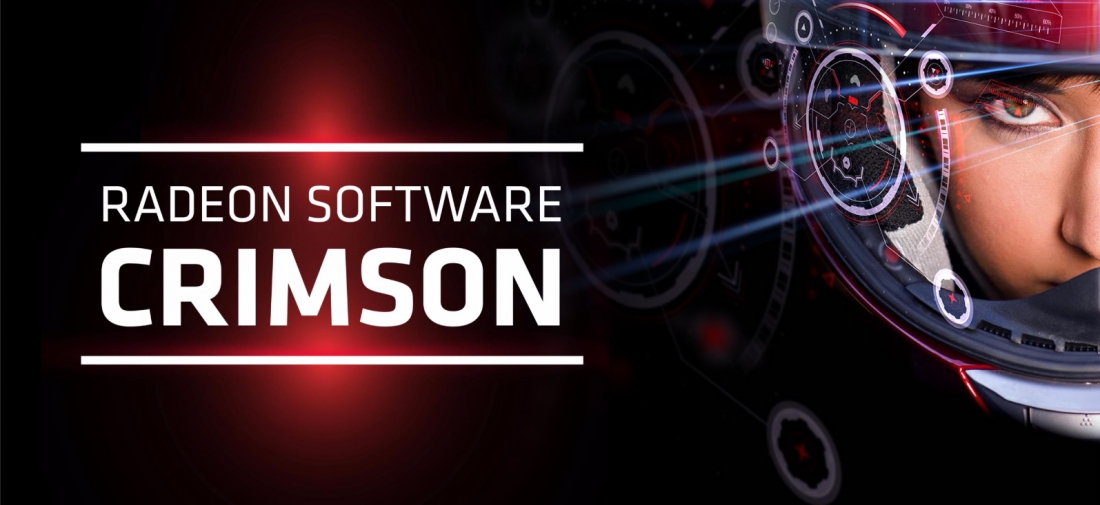AMD has today launched their new Radeon Software Crimson driver, bringing all-new features and a completely revamped interface to a new driver utility that replaces the aging Catalyst Control Center. If you want to skip the literature, just click here to download.
The main new addition to Radeon Software is a redesigned driver utility called Radeon Settings that focuses on accessibility and usability. Rather than hiding various features in confusing drop-down menus and cluttered panels, Radeon Settings is now much easier to navigate thanks to suitable separation of features into different tabs.
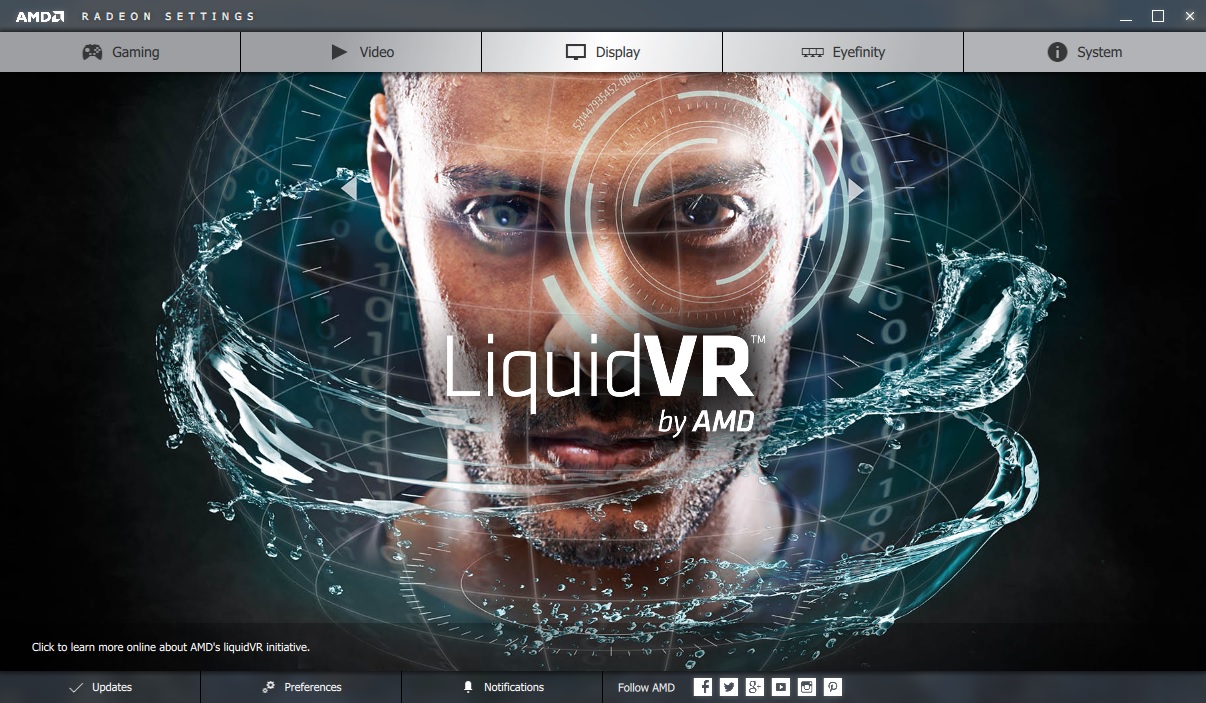
The end result is an intuitive driver utility that looks great and makes it easy to control various settings. Inside Radeon Settings you'll find new features such as a much better game manager, easy-to-access Eyefinity settings, and a better notification system for new driver updates.
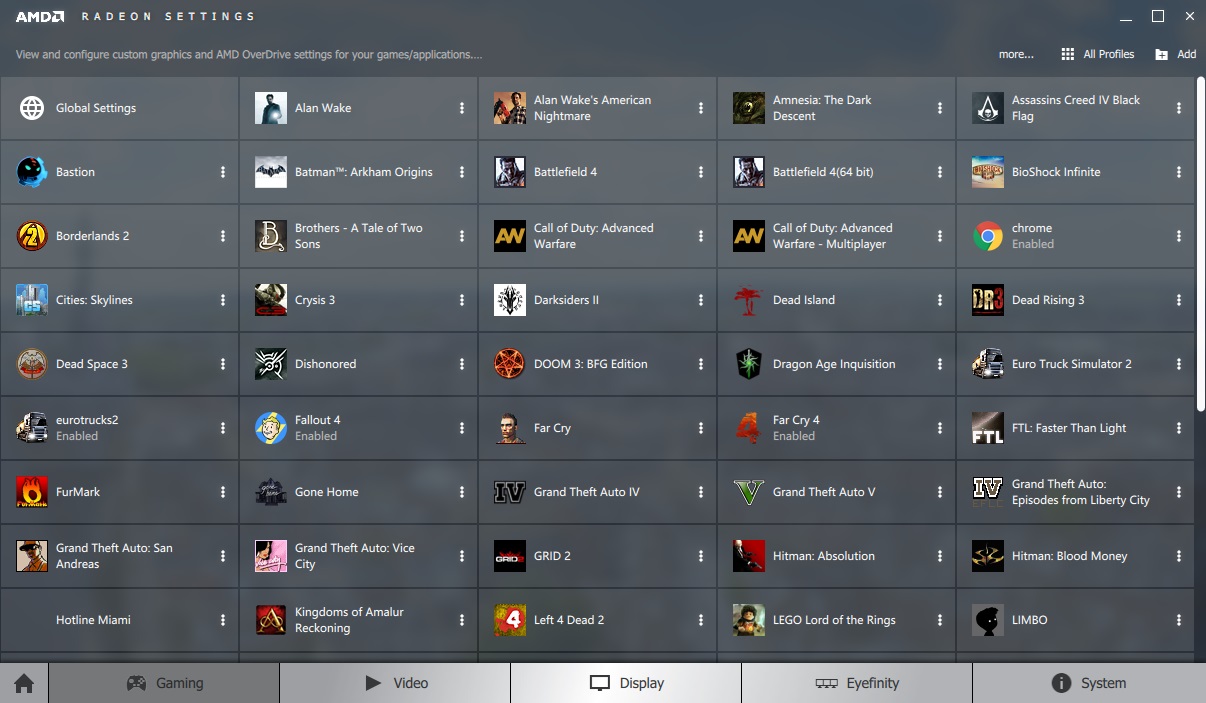
Radeon Settings is also much faster to use than the Catalyst Control Center. AMD claims the new utility launches ten times faster than CCC, and initializes displays three times faster. Provided with the driver package is also a new Clean Uninstall Utility that removes every driver and registry entry, making it easier to clean up your system.
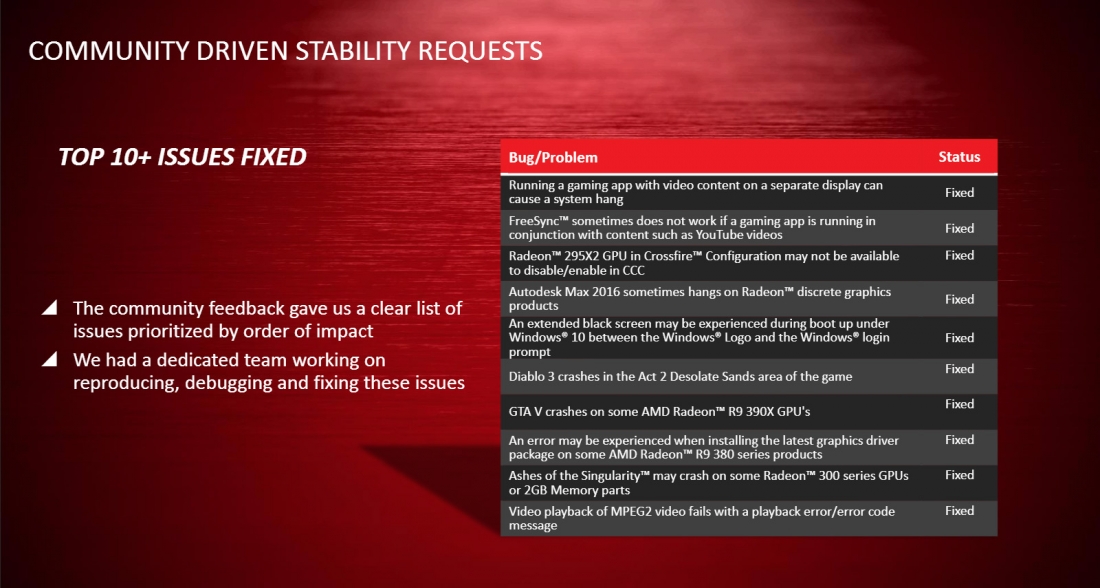
In the development process for Radeon Software, AMD created a significantly larger number of test systems than it previously had to ensure their developers can discover and fix as many bugs and issues as possible. The team also looked into the top ten issues as reported by AMD users, and fixed all of them in Radeon Software Crimson.
Radeon Software includes a ton of new features and updates that make AMD's graphics ecosystem more compelling. Here's a list of what you can expect when you install the new driver package:
- Custom resolution support, with the ability to set whatever timings, refresh rates and pixel clocks that you like (provided your display supports them)
- Better Virtual Super Resolution support in Windows 10, thanks to the operating system's high DPI support. This allows you to have the workspace of a 1440p display on a 1080p montior, for example.
- FreeSync low framerate compensation, bringing smoother gameplay when frame rates drop below the minimum refresh supported by a display. Essentially this means FreeSync will act like G-Sync below the minimum refresh, adaptively duplicating frames where possible. You'll still be able to choose between having V-Sync on or off outside the supported refresh region as well.
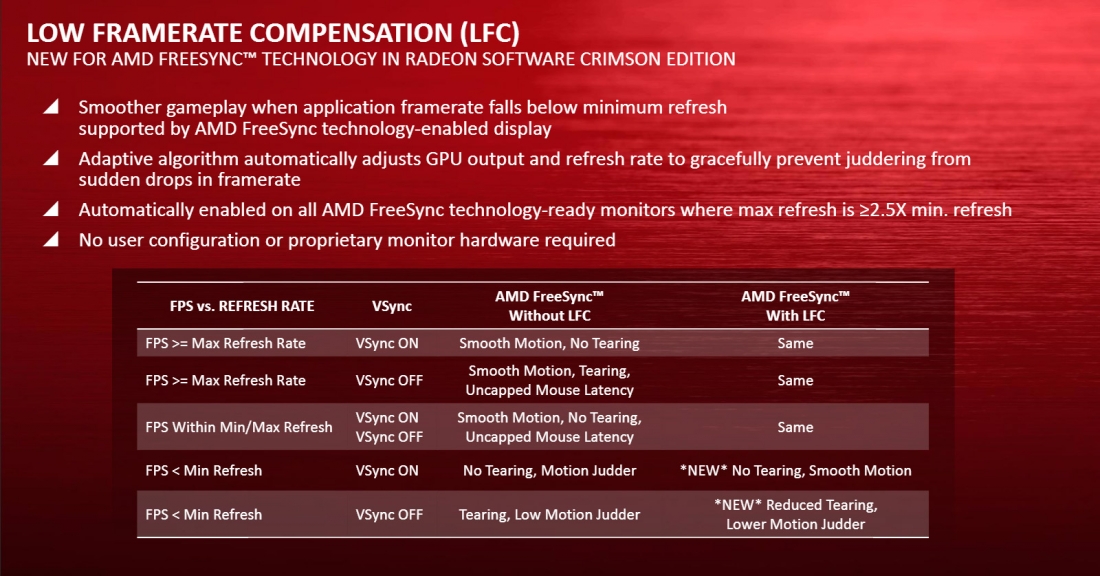
- Frame pacing support in DirectX 9 games, ensuring smoother gameplay for CrossFire users in older games.
- Support for video features such as Advanced Detail Enhancement and reduced motion blur on 6th-series AMD APUs
- Support for adaptive directional scaling when viewing 1080p content on a 4K display
- Support for dynamic contrast, increasing image contrast in videos and images through an algorithm (if you have the setting enabled).
- OpenCL 2.0 additional features support.
But what about performance improvements? Well you won't be disappointed with the Radeon Software Crimson driver, as there are tons of improvements AMD has made in a range of important areas.
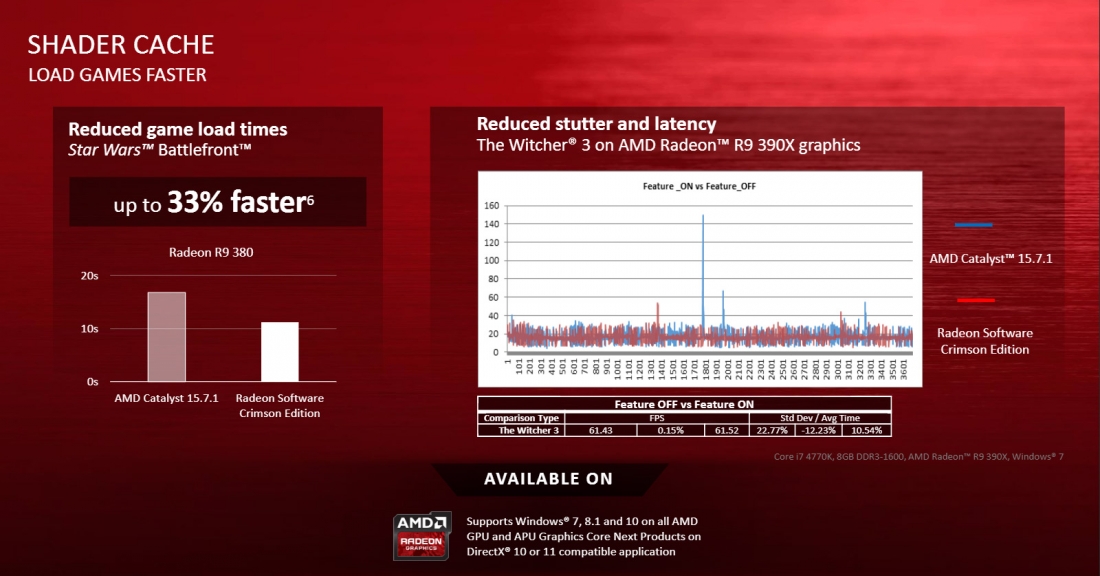
AMD has included a new feature called Shader Cache, which reduces game load times and stuttering by storing and reusing compiled game assets rather than compiling them on the fly. This helps games like Star Wars Battlefront load up to 33 percent faster, and in some situations this improvement is definitely noticeable
Radeon Software Crimson edition also improves DirectX 12 performance in games such as Fable Legends, while improving the general performance of games such as Call of Duty: Black Ops III, Star Wars Battlefront, and Rainbow Six Siege compared to their Catalyst 15.10 driver. Linux users can also expect performance improvements in a handful of titles including Portal 2 and BioShock Infinite.
Performance improvements don't end there. AMD has reduced the flip queue from three frames to one frame, reducing mouse and keyboard latency in DirectX 9, 10 and 11 games. One example AMD gives is the reduction in latency from 51 ms to 17 ms in popular e-sports title Dota 2 running on a Radeon R7 370.

AMD has widened their Frame Rate Target Control (FRTC) range, allowing you to set a target between 30 and 200 frames per second. The idea behind FRTC, which isn't new to Radeon Software, is that you can cap a game's frame rate to whatever you like (typically you'd choose your monitor's maximum fresh, eg. 60 Hz or FPS), preventing the GPU from rendering any additional, unnecessary frames.
In low-intensity games that would normally render at frame rates well above what your monitor can support, using FRTC can reduce your GPU's power consumption by capping its output. AMD claims they've achieved power use reductions up to 1.8x, with 23 percent better performance per watt.
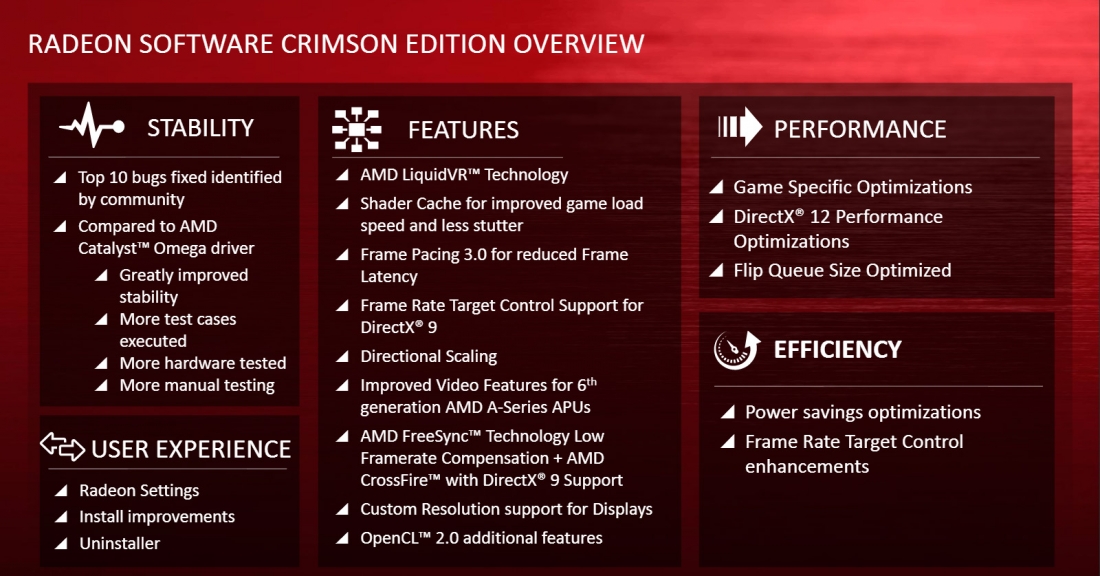
And that's it for the massive collection of new features and improvements AMD has crammed into Radeon Software Crimson. The driver should be available to download now from our drivers section.
As for the future, AMD has promised to release WHQL-certified drivers more frequently in 2016, with the company hoping to go from three releases this year, to six next year. There will be "additional beta releases" as well, most likely to coincide with game launches.
